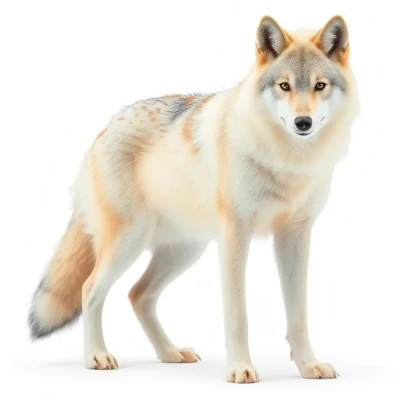
The Northwestern Wolf (Canis lupus occidentalis) is one of the largest and most powerful subspecies of gray wolves, reigning over the vast wilderness areas of Canada and Alaska. This apex predator plays a crucial role in maintaining the balance of North American ecosystems.
The Northwestern Wolf is an imposing canid, measuring between 80 cm and 1 meter at the withers, with a weight ranging from 45 to 65 kg for adult males. Its thick fur, generally pale gray with shades of white, black, or brown, allows it to withstand harsh winters. Its powerful musculature and large paws make it an enduring runner and formidable hunter.
The Northwestern Wolf (Canis lupus occidentalis) belongs to the Canidae family. Here is its scientific classification:
This subspecies primarily inhabits the boreal forests, mountains, and tundras of Western Canada, from British Columbia to the Yukon, as well as Alaska. Its territory can extend over several hundred square kilometers, following the migrations of its main prey such as caribou and moose.
The Northwestern Wolf lives in strictly hierarchical family packs, usually consisting of 6 to 12 individuals. The pack is led by an alpha couple that makes all important decisions. These wolves are known for their elaborate hunting strategies and complex vocal communications, including howls, growls, and whimpers.
A strict carnivore, this wolf primarily hunts large ungulates: moose, caribou, elk, and bison. A pack can take down prey up to ten times the size of an individual wolf. During times of scarcity, they settle for smaller prey such as beavers, hares, or even berries and insects.
Although locally threatened by hunting and habitat fragmentation, the Northwestern Wolf is not considered endangered. Its population is estimated to be between 50,000 and 60,000 individuals. In Canada, it is protected in national parks but can be legally hunted outside these protected areas.
The Northwestern Wolf shares its genetic heritage with several other North American subspecies:
Observing these magnificent predators in their natural habitat requires patience and respect: